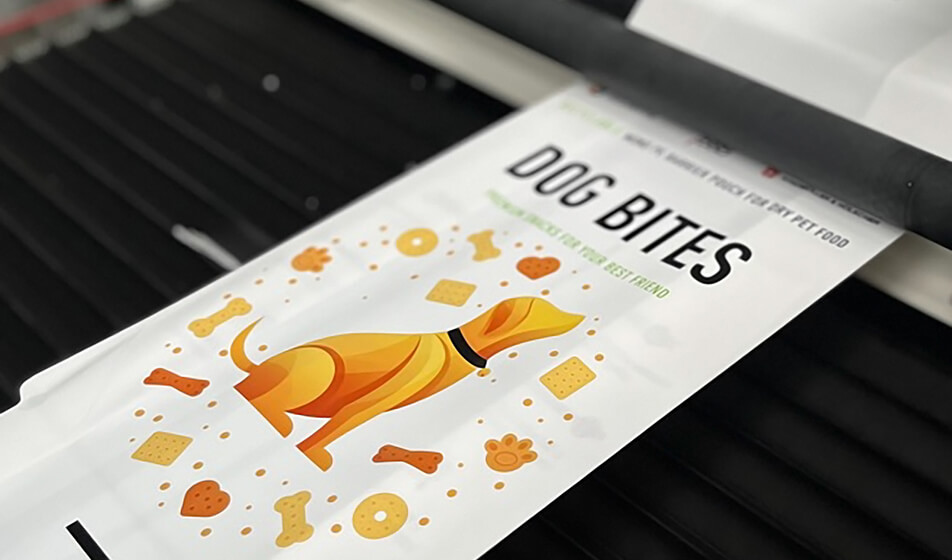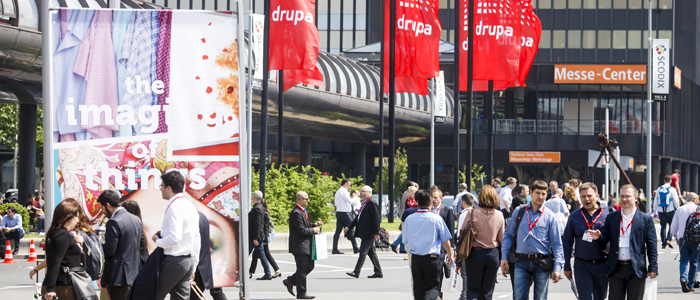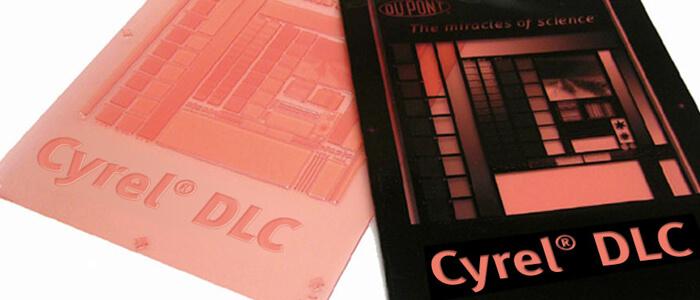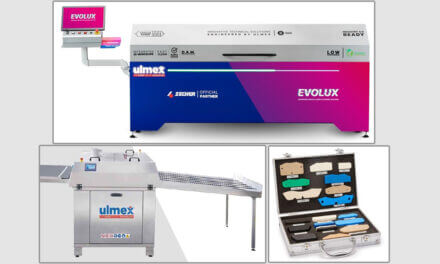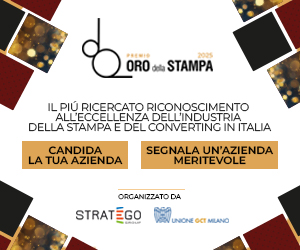Two product families of Functional Coatings – destined for paper manufacturers and converters – that provide new types of sustainable paper and plastic packaging with the resistance and sealability properties necessary to guarantee the integrity of their content. For what kind of content and for how long?With what resistance capabilities? And with what prospectsfor evolution? Gilles Le Moigne, Director of Siegwerk’s new CE Coatings Business Unit, tells us about it.

Gilles Le Moigne, Director of Siegwerk’s new CE Coatings Business Unit
We’re reading about it everywhere and Siegwerk, with its experience in the field, definitely confirms: the transition towards environmentally friendly packaging is impetuous and unstoppable and engages the industry in the effort to merge the different demands for eco-sustainability, cost-effectiveness, aesthetics and functional performance of packaging.
And packaging, let’s not forget, has the first and essential function of protecting its content over time. To better serve this objectives, the multinational ink and coatings company has decided to strengthen the R&D activities implemented over the years for the production of functional coatings, so much so as to create, as of last April, a dedicated Business Unit. Its task is to give impetus to the product families designed to integrate into the new “green” paper-based and plastic-based substrates all the functions necessary to extend the shelf life of the content to be enclosed in the final packaging, while keeping its characteristics intact and maximising its compatibility with both the environment and the economy.
The Unit is directed by Gilles Le Moigne, who in this interview tells us about its prerogatives, the advantages and applications of these products, and offers us a glimpse into the company’s projects for the future.
Siegwerk is an established ink manufacturer, now accelerating on Circular Economy coatings. What is this about?
It’s about a complete portfolio of barrier coatings, sealing lacquer and protective coatings marketed under the CIRKIT umbrella brand, holding moisture, steam, oxygen, oil and grease resistance properties, and everything that serves to protect the integrity of food, drugs or any other packaging content. We formulate these products with specific characteristics aimed at the two main types of users – paper and cardboard manufacturers and packaging converters and printers – who work on different machinery and therefore require products with different viscosity and drying temperatures. They come both in solvent-based or water-based formulas, with the related differences in energy consumption and process speed, and can be applied to both cellulosic and plastic substrates, traditional and non-traditional.
In the packaging industry, the transition to a circular economy is mostly taking place by replacing plastic with paper or by adopting PE or PP-based monomaterial laminates as an alternative to the more difficult-to-recycle composite ones . Demand for both of these material categories is rapidly growing, opening up development prospects for functional coatings: what potential value do you assign to this market?
Looking at these dynamics, these type of coatings, so important for the manufacturing of sustainable packaging, have a huge potential, capable of generating a production boost in the order of millions of tons. However, in order to find alternatives to traditional, well known, effective and cost-effective solutions, technology alone is not enough: we need to change our attitude, and to provide for investments in new equipment and new skills. It is a demanding job and, rather than practicing in forecasting, we must center on bringing together the entire supply chain – manufacturers of materials, machinery, inks and coatings, converters and brand owners – to focus on effective objectives and solutions. The key word today is “collaboration” and every time a real collaboration happens it brings really significant results, very positively received by the market.
Can you give us some concrete examples?
In the lively, growing segment of paper packaging (currently worth 60% of Siegwerk’s coatings department turnover, Ndr) I would mention the razor blade pouch we have developed with Bobst Bielefeld and UPM, printing on two different 45 and 62 g/sqm substrates. Siegwerk supplied the water-based inks and UniNATURE Preprint Glossy OPVs for the outer side of the package, and the CIRKIT seal and barrier coatings for the inner side, with excellent results in seal strength and hot tack as well. Again on UPM paper, All4Labels in Schio printed a peppermint candy packaging on a DGpress AUXO 900 hybrid web-offset platform using 4-colour UV inks and our water and grease barrier coatings, complemented by very strong seal coatings. In both cases, the results in terms of functional and aesthetic performance, but also machinability and more in general economy of the process, are really remarkable.
What about plastic?
Here at Siegwerk we have dealt with very challenging substrates, obtaining excellent results that are catalyzing the interest of the industry. With DGpress, to cite a successful case, we have worked on a dry pet-food packaging providing colour and white inks, transparent and matt varnishes and our solvent-based coatings to ensure resistance to grease. The result is a very high-performance PE-based monomaterial laminate that can be fully de-inked after delamination, while delivering great results in terms of visual quality of the packaging and organoleptic quality of the food contained.
Another significant example is the mono-material laminate for coffee with a very high oxygen barrier, which we also developed with DG press and All4Labels. Here one of the most important effects of our barriers concerns the shelf life of the product, which reaches 6 months without any alteration in taste and aroma. This is a shelf life shorter than the 9 months guaranteed on average by the previous multi-material structures, but still very long and, above all, well above the real needs of the large-scale retail trade and the market.
Just what I was getting at: do your coatings guarantee the same lifespan as traditional structures?
In my opinion, the correct question here is ‘if we want to revolutionize packaging, can we continue to demand the same performance from it as always?’ As far as shelf life is concerned, the answer will be ‘not always’. But, mind you, it is not an answer that closes but one that opens up new questions to be asked in order to get out of extreme and often penalizing logic. Like, for example, whether in all applications there is really a need to guarantee years of life to products that are consumed much earlier. In fact our Brand Owner Collaboration team, which handles relations with giants such as Unilever, Nestlé, Mars, etc., notes that brands are no longer judging the safety of a solution with standard criteria; the trend is increasingly to reason together with packaging suppliers on the real needs and performance that green technologies such as ours are capable of guaranteeing today. With one clarification: for Siegwerk, adherence to the very stringent food and pharma safety standards is at the top of all goals, always, and therefore for us it is not a question of making ‘compromises’ but of finding new ways.
From a technical point of view, what challenges are you facing in the market? What are you focusing your research on?
There are many ‘difficult’ products, and challenging processes, and our R&D is engaged on several fronts. I am thinking, for example, of paper packaging for ice cream and frozen food or, on the other hand, of packaging compatible with tropical environments, with high humidity and high temperatures where barriers degrade quickly, requested by customers in Latin America and South East Asia. Or to some particular applications, such as cardboard packaging for pizza to be warmed up directly in the oven at 150 °C and above – conditions in which our barriers cannot withstand more than two minutes. Even though this is an uncommon mode of use, the brand owner is concerned to protect these consumers as well, not least because inappropriate packaging could lead to the migration of substances from the packaging to the contained food. A bit like what happens with silicone paper containers for cooking: silicone resists heat with no problem and replacing it is not the same as saying …
What about sterilisation?
Yes, it is another critical process and typically concerns pharmaceutical packaging – numerically very interesting but also regulated by very stringent safety standards, which until now has relied on very complex and ‘heavy’ barrier structures in economic and environmental terms. In order to offer sustainable alternatives, we have developed ad hoc, high-performance barrier coatings for both paper and film. These are combined with sealers, hot or cold, depending on the heat sensitivity of the packaged product and the reactivity of the paper, aluminium etc. substrate.
Not only are the products difficult, but also the processes…
Yes, and this is where collaboration with substrate manufacturers and converters, and with machinery manufacturers, pays off. I am thinking of the ‘machinability’ of coatings that are formulated in such a way as to prevent criticalities such as process slowdowns or coating defects, or the behavior of bio-plastics and, more generally, of the new sustainable polymers, which is little known and difficult to govern. Areas where development is constant and part of normal product life.
How much does the cost of these coatings with such sophisticated properties affect the finished packaging?
Very little. By now, operators know that in order to do the accounting correctly, they do not have to consider the cost of the material itself but that of the finished packaging and the entire process to produce it. In the end, the differences are zero or modest, and they drop to zero altogether when they also consider the economic impact of handling packaging waste at the end of its life. And if until now operators could ignore this because it was a cost absorbed by the community, today this can no longer happen. The new environmental regulations, starting with the PPWR, impose the principle that the impact of packaging must be considered right from the design stage and no one will be able to neglect it any longer
And the future? What does it hold in store for us?
More and more sustainable packaging, the result of constant improvement by the entire supply chain. And as far as Siegwerk is concerned, an ever-increasing number of products made with ever ‘greener’ formulas, allowing for completely biodegradable and compostable substrates. It is an ideal, but not so abstract, and we take it very seriously.

